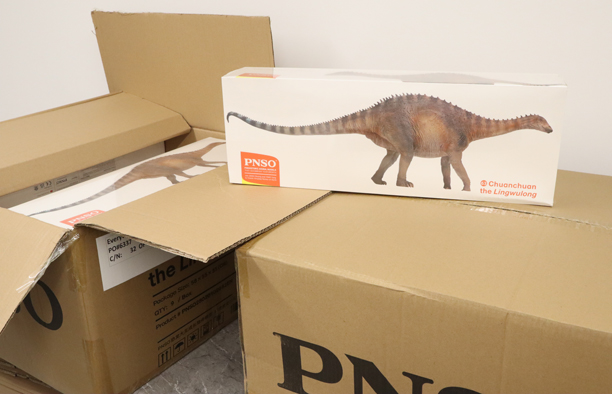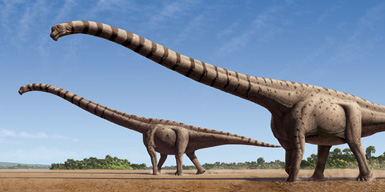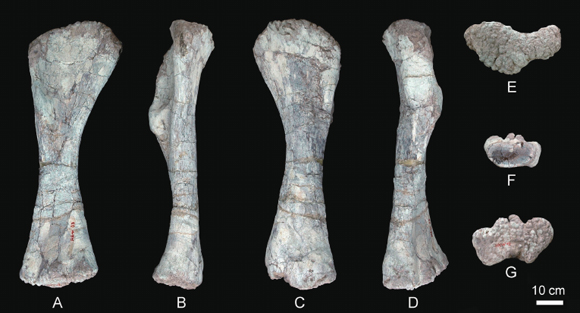A Second Mamenchisaurid Dinosaur from Anhui Province is Described
Anhuilong diboensis – From the Middle Jurassic of Anhui Province
Chinese scientists have published details of a new species of long-necked dinosaur from eastern China. The fossilised remains, although fragmentary, have permitted the researchers to confidently assign the specimen (AGB 5822), to the Mamenchisauridae family of sauropods. The dinosaur has been named Anhuilong diboensis and it suggests that by the Middle Jurassic, mamenchisaurids were already a diverse family. It is likely that the sandstones and mudstones that form the majority of the fossil bearing, Middle Jurassic-aged strata near Huangshan (Anhui Province), will yield more dinosaur fossils.
A Life Reconstruction of a Typical Mamenchisaurid Dinosaur
Picture credit: Julius Csotonyi/Natural History Museum of Los Angeles County
The Second Member of the Mamenchisauridae from Anhui Province
The fossil material, consisting of the remains of a single forelimb, representing one individual dinosaur (humerus, ulna and radius bones), was distinct enough to permit the scientists, which included researchers from the Chinese Academy of Sciences and the Anhui Geological Museum, to establish a new genus.
Anhuilong diboensis
Anhuilong diboensis is the second mamenchisaurid to be identified from the Middle Jurassic Hongqin Formation of Shexian, Huangshan (Anhui Province, eastern China). The first mamenchisaurid from this locality, Huangshanlong anhuiensis, was named and described in 2014. The authors of the scientific paper describing A. diboensis were also responsible for the earlier study of H. anhuiensis. A phylogenetic analysis of the limb bones from these two specimens suggest that Anhuilong is the sister taxon of Huangshanlong and with Omeisaurus from Sichuan Province, they together form a sister clade to all other members of Mamenchisauridae.
Views of the Right Humerus of Huangshanlong anhuiensis
Picture credit: Vertebrata PalAsiatica/Jian-Dong Huang et al
The picture above shows various views of the right humerus (upper arm bone) of H. anhuiensis. The morphology of limb bones and how they compare to each other (total length of the ulna to the humerus and the total length of the radius to the humerus), are distinct enough for palaeontologists to ascribe them to the Mamenchisauridae and to erect a new genus.
Key
A = humerus viewed from the front.
B = humerus viewed from one side (medial view).
C = humerus viewed from the back.
D = humerus viewed from the other side (lateral view).
E = viewed from the top down (cranial margin pointing upwards)
F = view of a cross section, near the narrowest part of the bone.
G = viewed from underneath (distal view).
The Spread of the Sauropoda
Until recently, palaeontologists had thought that although the Sauropoda were geographically widespread by the Middle Jurassic, sub-groups such as the Mamenchisauridae family and the Diplodocidae had restricted geographical ranges. However, earlier this year, a diplodocid dinosaur was described from northern China, proving that these long-necked dinosaurs were present in Asia during the Middle Jurassic. The fossil record for the Mamenchisauridae indicates that these types of Sauropods were restricted to China.
To read the article describing the diplodocid dinosaur (Lingwulong shenqi) from northern China: The First Diplodocid Dinosaur Described from China and the Earliest Known Member of the Diplodocidae.

Picture credit: Everything Dinosaur
The picture (above) shows Lingwulong dinosaur models arriving at Everything Dinosaur’s warehouse. These are PNSO figures.
To view the PNSO prehistoric animal model range: PNSO Age of Dinosaurs Models.



